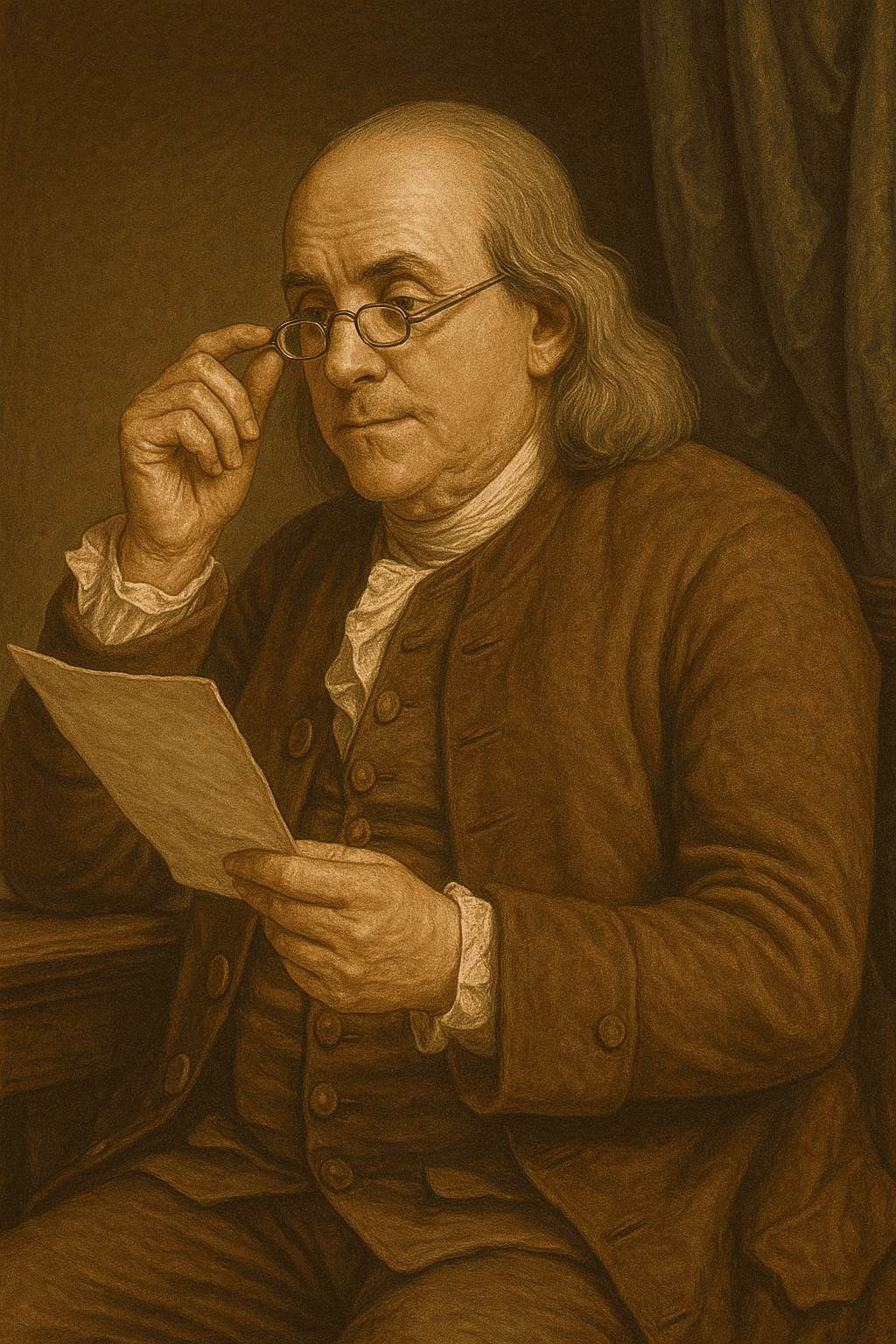On May 23, 1785, Benjamin Franklin—a founding father of the United States and a legendary innovator—announced his invention of bifocal glasses. Designed to aid those suffering from both nearsightedness and farsightedness, bifocals represented a significant advancement in optical technology and a quintessential example of Franklin’s practical genius. His innovation has helped generations improve their vision and continues to be used in modern eyewear today.

Franklin, well into his later years by the 1780s, found himself constantly switching between two pairs of glasses—one for reading and one for seeing at a distance. Frustrated by the inconvenience, he devised a solution: cutting the lenses of each pair in half and combining them into a single frame. The upper half corrected distance vision, while the lower portion allowed for reading and close-up work.
The result was a practical and efficient tool that allowed users to seamlessly shift focus without changing glasses—an innovation born not in a laboratory, but from personal necessity and Franklin’s enduring curiosity.

Bifocal lenses joined a long list of Franklin’s inventions that aimed to solve everyday problems. From the lightning rod and the Franklin stove to swim fins and a flexible urinary catheter, his inventions reflected a deep commitment to science, utility, and public service. Franklin’s bifocals were not patented; like many of his inventions, he offered them freely for the benefit of others.
While improvements and variations have been made over the centuries—including progressive lenses and trifocals—the fundamental principle of Franklin’s bifocals remains in widespread use, highlighting the timeless nature of his design.

Franklin’s announcement of bifocal glasses on May 23, 1785, was more than a scientific milestone—it was a demonstration of how observation, problem-solving, and an inventive spirit can produce meaningful change. His innovation continues to improve lives, offering clear vision to those who might otherwise struggle with the limitations of aging eyesight.
In true Franklin fashion, bifocals exemplify how thoughtful, accessible technology can empower people, embodying his belief that science and invention should serve the public good. His legacy as a thinker, inventor, and humanitarian is perhaps best reflected not only in what he imagined—but in the clarity with which he helped others see the world.